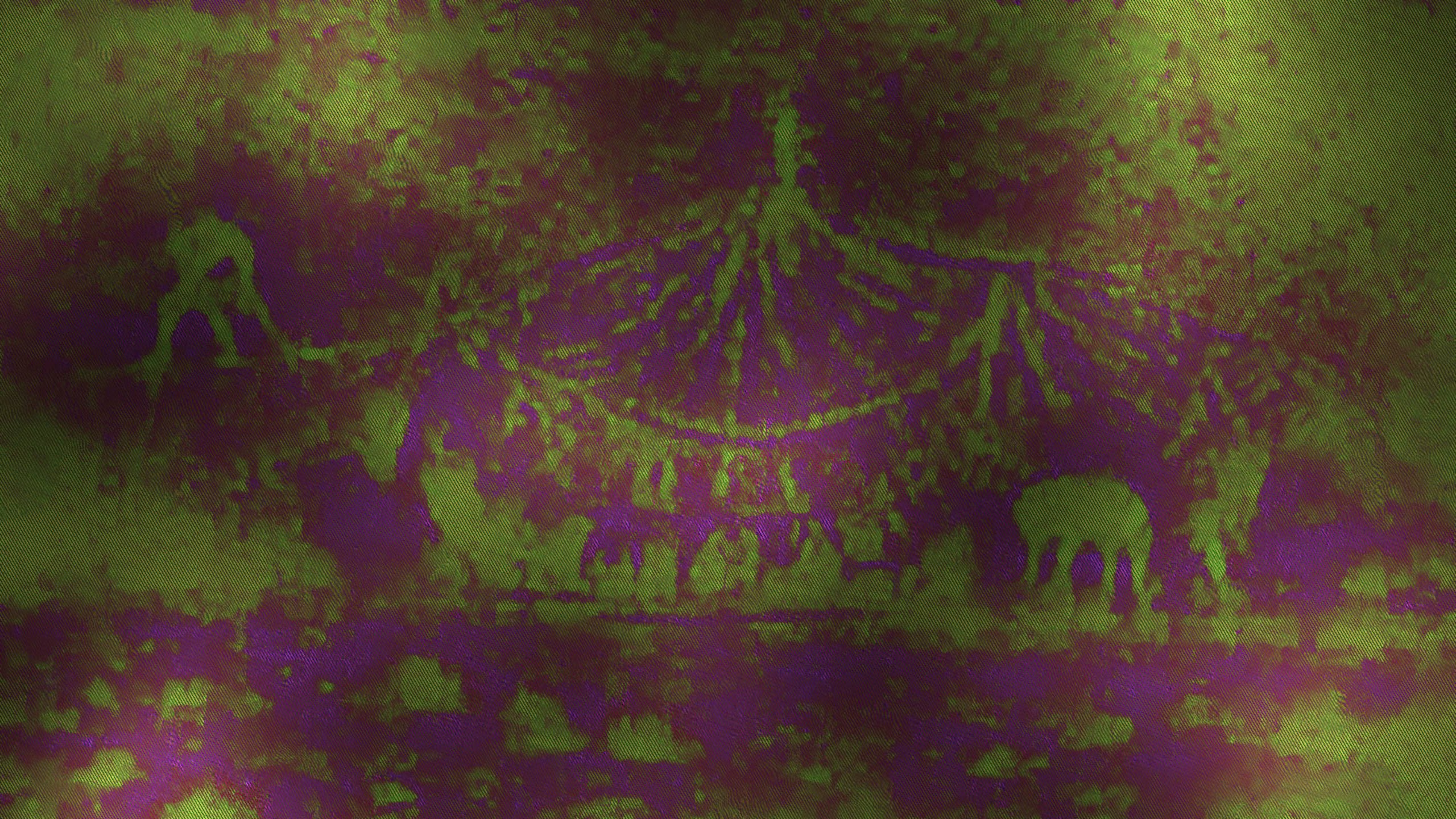You refer to a therapeutic technique inspired by the Tibetan Yangtik tradition. Why have you been interested in it?
I’m a curious person, and I’m interested in exploring the different boundaries that limit our experience on this planet. We own this instrument—our body, equipped with specific sensory apparatus, and I like to explore the liminal possibilities it can offer. There’s also a therapeutic aspect I found beneficial in addressing some psychological issues I’ve been dealing with for a long time.
An off-screen voice, like an inner voice, shares a first-person text, not devoid of humour and irony. Where does the text come from? Can you tell us more about how it was written? What about the work on the voice (tone, elocution…)
It’s my voice, and the text comes from voice recordings I made during my stay in the darkness.
I had a small audio recorder with me—I put a sticker over the control lights and recorded my thoughts and ideas. I did it for therapeutic reasons, so I could return to those comments later.
I didn’t initially intend to make a film out of it. But the experience was so interesting and powerful that I started thinking about how to express it visually. It felt like quite a challenge, and I enjoy these kinds of artistic challenges.
Bardo is an immersive experience, a perceptive adventure. Sound texture and composition play an essential role in this sensory adventure. How did you go about it? According to what principles?
I always put a lot of emphasis on sound design and like to select sounds myself, so I prepare a rich sound texture before handing it over to the sound designer. I try to make the sound reference as detailed as possible. The key was first to construct a narrative in the voice over—from the many chaotic little inputs I recorded during the experience. Then I made a clean recording of the voice over, and we began working on the different motifs and topics that emerge in the film.
I wanted the sound design to be as immersive as possible, so the viewer would truly feel plunged into the atmosphere, creating a specific environment.
You already included this kind of image in FREM. Can you explain the technical use of AI to generate this visual flow in continuous movement and transformation in conversation with the text? How does it work?
The AI tool I used was very simple. I found it on GitHub; it generates videos at a very low resolution (640 x 360) and only 8 frames per second. But I liked that it was stylistically very consistent, and it produced non-trivial outcomes from simple prompts. The results felt dreamy, sometimes surreal or absurd but always coherent. So I used it to generate short videos based on different motifs I wanted to visualize according to the voice over narrative. Then I drastically slowed them down and applied frame blending, which created this hypnotic, flowing feeling—one motif slowly morphing into another.
Your previous trilogy questioned our relationship with technologies and the imagery they can produce. What were Bardo’s challenges in this respect, particularly in its use of AI?
The challenge was to find a way to visualize something as subtle and often abstract as visions in the darkness. I experimented with various tools until I found the one I mentioned in the previous answer. I also spent a lot of time perfecting the details—the choice of colours, the opacity of the images, and the parameters of other effects I applied on top of the raw outputs from the software.
You generate and explore the plasticity of the image through work on the technologic nature of it. Following the idea of darkness as a projection surface, you present a kind of pictorial but unstable matter, held between abstraction and figuration, subject to interpretation. What is your relationship with painting and its history?
I don’t have particularly profound knowledge of the history of painting, but I’ve made two other animated documentaries and have worked with visual artists on different occasions. I enjoy deforming the original raw photographic inputs and stylizing them with effects, so that at times they may evoke the feeling of a painting.
Why was it important for you to end the film with a return to white light in a naturalistic environment, i.e. one based on a certain idea of nature?
The idea was to convey the experience of darkness therapy to the viewer as fully as possible.
It’s a journey—with a beginning and an end. And to truly experience darkness, you also need to experience light, its binary opposite. The actual place where I underwent the therapy was a simple hut in nature and that’s what I saw when I stepped out. It was my first view after leaving the hut.
Bardo seems to follow on from your previous film, as a response to a depressed society in search of meaning. In what way does the film continue your reflections on solitude, even solipsism?
This film really wasn’t planned—I made it as an experiment. Yes, it’s a self-centered film, because it’s based on my personal experience in darkness. But I hope others can find some of the ideas interesting and take it as a kind of meditative journey. The two other films I’ve just finished don’t deal with the same themes, and I’m not a character in them. I guess I also needed a break from myself. :)
Interview by Claire Lasolle
